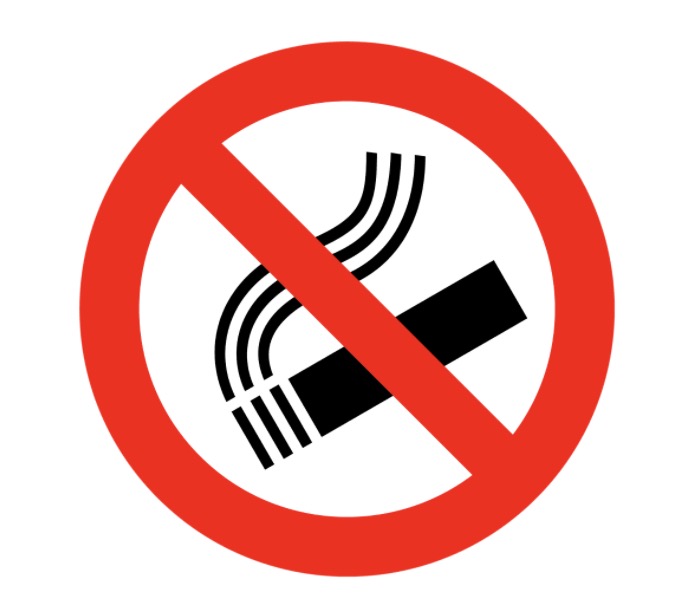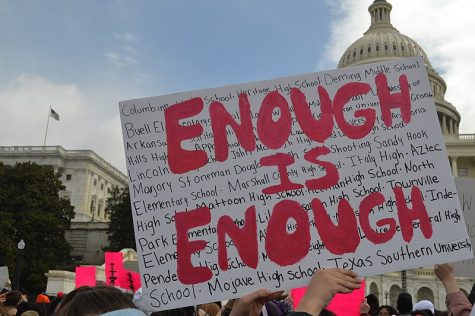Should All Public Buildings Be 100% Smoke Free?
Approximatly 15% of all adults smoke, meaning that in a room of 10 people, either one or two of them are feeling the need to smoke. Much discussion occurs relating to rights of smokers and other non-smokers around them, however, no big action has been taken to discourage smoking. All public facilities should be 100% smoke free because smoking in public facilities puts non-smokers at risk of second-hand smoke which is almost as dangerous as smoking itself, causes difficulty cleaning the spaces and reducing the smell of smoke, and promotes the social side of smoking without explaining the dangers.
Smoking indoors in public facilities violates the right of others to feel safe in public facilities because second-hand smoke causes major health issues for non-“active” smokers who were not given the choice of inhaling smoke. There is no risk-free level of exposure to secondhand smoke, and allowing smoking indoors exposes people to smoke without consent. Secondhand smoke causes more than 7,300 lung cancer deaths among U.S. nonsmokers each year. These are only the lung cancer deaths of those who chose not to smoke, and the selfish behavior of smokers damaged their lungs and caused their deaths. According to the CDC, non-smokers who are exposed to secondhand smoke at home or at work also increase their risk of developing heart disease by 25–30%. Second-hand smoke lingers for up to 5 hours after the last smoked cigarette. This means that anyone in the public facility for the next few hours is having toxic chemicals enter their body without their knowledge or consent. So even if a person is walking through a mall that allows smoking hours after the last smoker walked through, they will experience effects of secondhand smoke even though they never knew of a smoker there before them.
Public facilities already take hours for nightly cleanings, and cleaning staff are already overworked and underpaid, however, having public facilities with smoking allowed creates a major cleaning problem because of the lingering smell and chemicals and surfaces and objects. Thirdhand smoke is the contamination of the air and surfaces after a cigarette is put out and can linger on clothes for days if not properly cleaned, and any public facility like a mall would have many goods like clothes and other commercial products that would not be sellable because of a severe smoky smell. In addition to clothes getting contaminated by smokers, to get the smell of smoke off of chairs, tables, and even walls, water just won’t do, and vinegar is required to be sprayed and left on for an hour before wiping and drying the surface. Cleaning times could double or triple and cleaners would have to spend even more time cleaning up after people who don’t take enough thought to care about their messes. To clean the air building’s ventilation systems would need to be adapted or else the air would be full of toxins and chemicals as well as smelling smoky. Public facilities should not have to focus time on making sure that air is filtering, it is much easier to go 100% smoke-free.
The social side of smoking meaning the chats, hangouts, and time off of work are large draws to new smokers. Allowing smoking in public facilities promotes that lifestyle without reminding people of the dangers of smoking. According to one 2009 study conducted by the World Health Organization, at least one-third of all cigarettes smoked are smoked by people in social situations, and many smokers, when seeing other people smoking, are more likely to smoke themselves. In recent surveys from the United Kingdom, smokers often view socialization as one of their main reasons for smoking, something that is especially true for smokers under the age of 35. Even “social smokers,” who might not otherwise smoke on their own, often do so in public situations as a way of blending in with the crowd. Smoking in social situations allows for the potential harms of smoking including higher risk for a variety of cancers, risk of heart disease, addiction to nicotine, and yellowing teeth and nails to be forgotten or put aside for a more comfortable social experience.
All public facilities should be 100% smoke free because it puts secondhand smokers at risk, makes public facilities much harder to clean, and promotes the social side of smoking without stating the risks. In the past few years not much change has occurred on the topic of smoking, and though most public buildings are prohibiting smokers for smoking indoors, only after all public facilities take action and prohibit smoking will smokers be forced to think twice before lighting up what could be their last cigarette. A majority of people do not smoke and have made the healthier decision to avoid smoking, however, allowing smokers to smoke in public facilities sacrifices the right to choose what is getting put into your lungs as a non-smoker and allows people to fuel their addiction to nicotine while destroying their bodies.

Campbell Portland is a freshman at Mendham High School. She enjoys playing soccer, basketball, as well as playing the Alto Saxophone and Bassoon in the...






